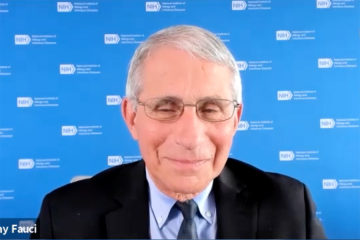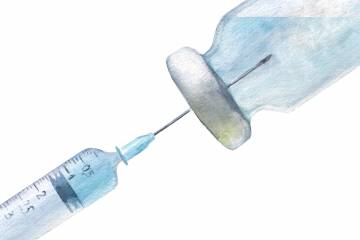Though vaccines promise an eventual path out of the COVID-19 crisis, the U.S. enters winter facing the most alarming trends yet, according to experts from the Johns Hopkins Bloomberg School of Public Health.
"This is code red," said epidemiology professor Amber D'Souza during a discussion hosted by the Bloomberg School on Thursday afternoon. "No matter which of the data and the metrics you look at it, this is the most serious part of the epidemic."
As the U.S. continues breaking records for new daily cases of the disease, some hospitals are facing patient surges beyond their capacities. Over the next few weeks, "things are going to get worse rather than better," said David Dowdy, associate professor of epidemiology.
But hope is not lost, the experts emphasized. "There are things we can do," D'Souza said. "It's not too late now."
Europe offers an encouraging example. They effectively contained a recent COVID-19 spike that shared similarities to the one the U.S. is currently experiencing. There, targeted closures and restrictions have made an impact, said Caitlin Rivers, a senior scholar at the Johns Hopkins Center for Health Security.
Some areas of the U.S. are now trying similar approaches. "We have to make really difficult tradeoffs and decisions in the course of this pandemic," Rivers said, suggesting that some regions should consider keeping schools open at the expense of temporarily closing restaurants and bars. "Finding ways to make schools safe to operate, I think, should be our absolute top national priority."
Joshua Sharfstein, vice dean of public health practice and community engagement at the Bloomberg School, pointed to promising recent news from two major COVID-19 vaccine developers. In phase 3 trials, both Pfizer and Moderna have reported efficacy above 90% in preliminary analyses as they prepare to file for FDA emergency use authorizations. Both companies have already begun manufacturing the vaccine in advance, he said, so millions of doses may be available before the year's end.
It could be well into spring or summer 2021, though, before enough of the population is vaccinated to tamp down the virus, Sharfstein said. "That is the bridge we're trying to build—between now and that time when we have a lot of doses of safe and effective vaccines to use, to generate the herd immunity."
This winter could mark the pandemic's final big surge, Dowdy said, but the key is to stop the spread during that time. "A lot can happen in the next two to three months," he said. "We need to do what we can today to limit that damage."
D'Souza acknowledged the reality of "COVID fatigue" as the pandemic drags on relentlessly. "We've already paid such a toll economically, socially, and in health as a country. And there's hope. There is great news about the potential of these vaccines," she said. "This is such a moment … for us to rally and do this smartly and save lives over the winter. Because if we hold out, it can make a tremendous difference."
Editor's note: A previous version of this article misstated the leading cause of death in the U.S.
Posted in Health, Voices+Opinion, Politics+Society
Tagged vaccines, school of public health, covid-19











